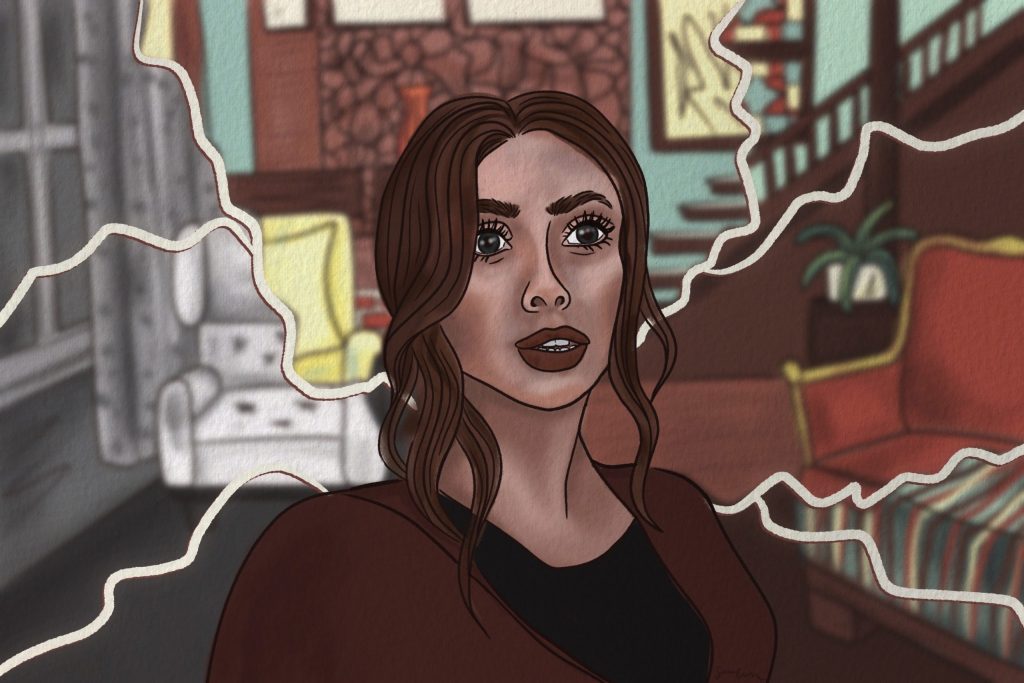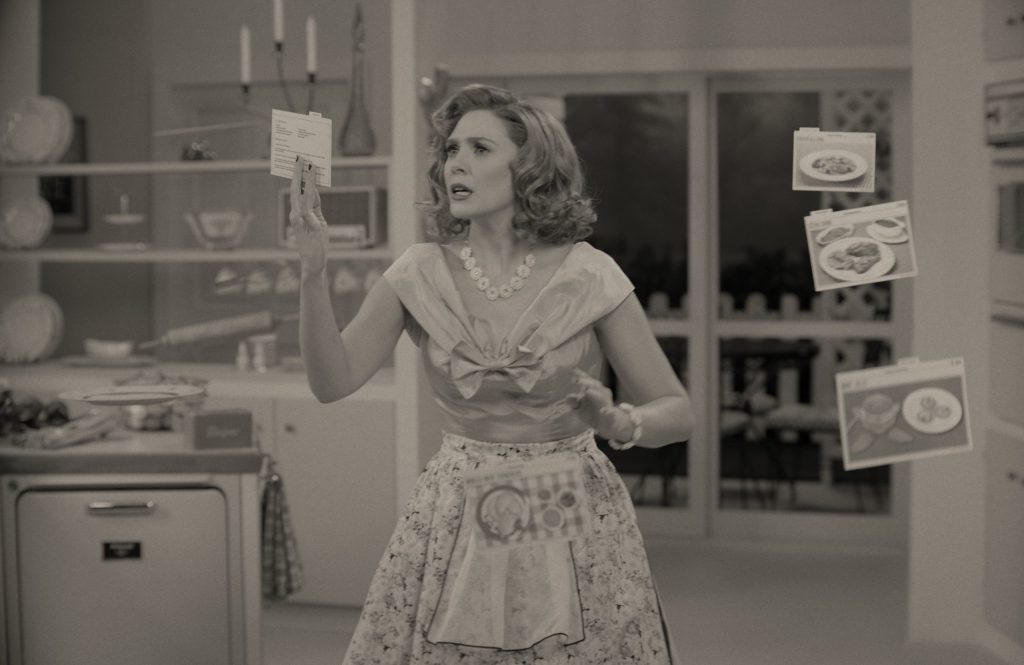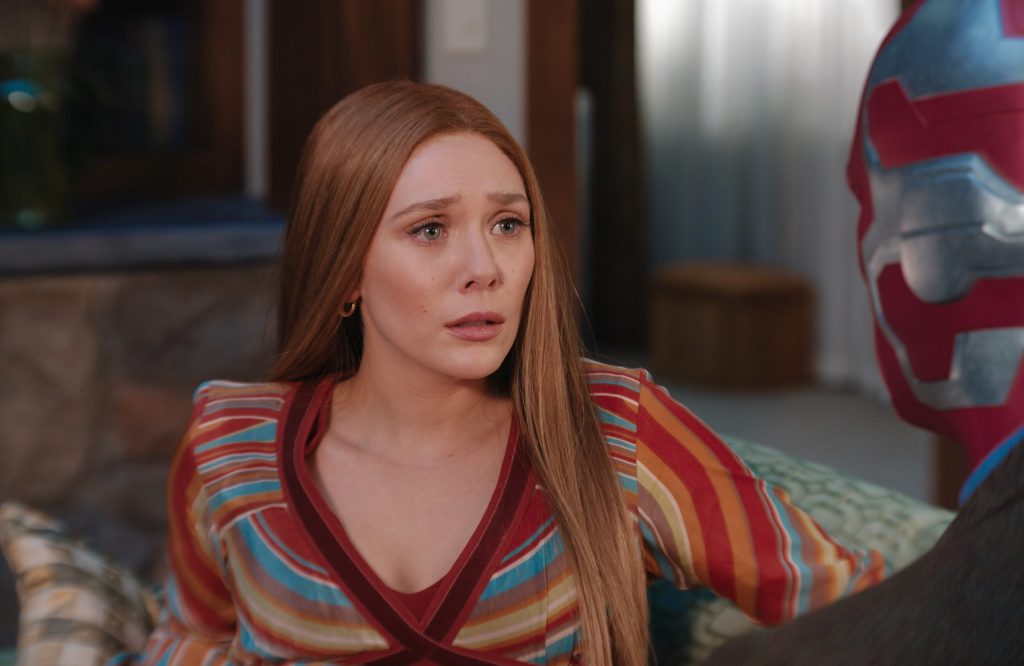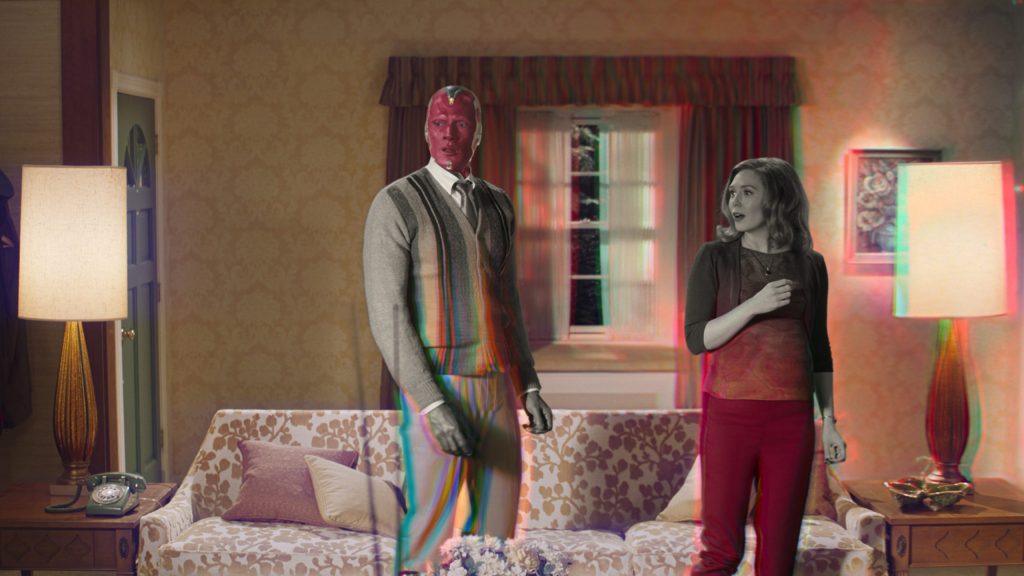How WandaVision opened the door for productive mental health representation
WandaVision productively depicts what it's like to live with grief and loss

“Let’s take a look at some real reruns,” Agatha Harkness, a wicked witch who has trapped Wanda Maximoff, says in the penultimate episode of WandaVision. Seconds later she whisks Wanda through a door and into her childhood home. Wanda’s mother opens a case of VCR tapes of I Love Lucy, Bewitched and Malcolm in the Middle, the comfort shows Wanda grew up with. As the family sits down to watch an episode of The Dick VanDyke Show, Wanda looks back and smiles at her family; she’s happy. Then the apartment explodes, killing her parents. Wanda and her brother are buried in debris for two days.
“Huh…So much trauma, and yet you were safe as kittens the whole time. So, what I see here is a baby witch, obsessed with sitcoms and years of therapy ahead of her,” Agatha said after watching the traumatic event unfold.
Over the course of 2021, Marvel has released its slate of Disney+ television shows that dive deeper into the lives of various side characters from the movies. WandaVision, The Falcon and the Winter Soldier, Loki and Hawkeye tackle mental health and illness in creative, impactful and accurate ways. They allow fans to learn from them while also staying within the MCU and not overwhelming the audience with medical information.
“The MCU has briefly touched on the effects being a hero can have on its characters in the past, like when they showed fans that Tony [Stark] was struggling with PTSD, but the heroes’ character development has never been as important as it is now. What was once a subplot overshadowed by the importance of saving the world is now a crucial factor in shaping Marvel’s tone as it moves forward,” wrote Julie Elizabeth Weyant, a features writer for GameRant.
Introduced in Avengers: Age of Ultron, Wanda was tortured as a child to exploit her powers, her brother died in battle and in Avengers: Infinity War, the love of her life was killed in front of her–twice. WandaVision brings her to the forefront, where she takes on a wave of grief and trauma that keeps knocking her down.
She works through her grief by using her powers to bend reality and create a world that mirrors the television shows she grew up loving, each episode representing a different decade. She lives in this fictional world to feel safe and escape reality, and to bring back the people she lost.

Each episode of "WandaVision" takes place in a different decade and is inspired by a different sitcom.

As the show progressed Wanda Maximoff changed the decade they were in based on the events of the previous episode.
The show acts as therapy in a way, said Robert Thompson, trustee professor of television, radio and film and director of the Bleier Center for Television and Popular Culture at Syracuse University. Since Wanda’s story is unraveled through a television show, she has time to process her trauma and begin to heal.
Throughout the majority of television history, shows have represented mental illness inaccurately. Shameless, which ran from 2011 to 2021, featured three characters diagnosed with bipolar disorder. In the early seasons these characters were portrayed as crazy, unpredictable and unhinged. On The Big Bang Theory and Friends, characters have mannerisms that reflect Obsessive-Compulsive Disorder, and it’s portrayed as a funny quirk. Shows have used mental illness as a narrative device to upset the plot and move the story along, said Kimberley McMahon-Coleman, author of Mental Health Disorders on Television: Representation Versus Reality and senior lecturer at the University of Wollongong Australia.
She added that a vast majority of people get their information about mental illness and health from fictional television. This inaccurate depiction has created negative stigmas, which cause discrimination against people who live with mental illness.
Don Diefenbach, professor and chair of mass communication at UNC Asheville, found in his research on mental illness and primetime television that mental illnesses were used as a shorthand, a way to justify a character’s behavior rather than talk about how they grew up and how their social circumstances shaped them.
“I’m looking for [shows] where the character has a diagnosis, not the character is the diagnosis. So, the character has a life and functions as a human in their world, and has relationships and has a life and they also have a diagnosis,” McMahon-Coleman said.
WandaVision is able to effectively execute this premise. Wanda is someone who is dealing with trauma, grief and PTSD. However, this is not the sole reason why she is a character on the show. She is a powerful superhero trying to make sense of her power, and is raising twins. She is brave, loving, hilarious in moments and deeply empathetic. All of this defines Wanda; she is not just her mental illness.
In an article for Slate, trauma therapist Erin Qualey explained that at its core, WandaVision is about a woman trying to cope with the aftermath of “unthinkable loss,” and it uses techniques to show the impacts of childhood trauma, methods of coping and ways to heal and provide hope. The way in which Wanda returns to her comfort TV shows to cope is something many people watching can relate to.
“She can take it to a different level because of her abilities. We veg out and zone out at the screen and tune out the world around us,” Diefenbach said. “She’s able to put herself into it, which is really just an extension of what we do with media to pretend that our problems don’t exist around us, and to create and explore a different experience in our heads. It’s very universal and very relatable.”

By rooting Wanda’s need to escape reality in relatable ideas, the show is able to depict grief and trauma in a way that does not degrade or misrepresent Wanda. “What is grief if not love persevering?” Vision asks Wanda in an effort to help her heal. It’s a beautiful line that helps the audience see grief in a new, empathetic light, one that is not rooted in stereotypes.
WandaVision is not the only Marvel show taking on the topics of mental illness. All four that have been released this year use form and genre to delve into these topics in unique ways. These shows give viewers the opportunity to learn about grief, loss, trauma and identity in a way that is effective but not essentializing.
“The fundamental difference is allowing these shows to go into the subject territories that have been getting back to that idea that mental health, dealing with mental health issues, is a television subject,” Thompson said. “You’ve got to have multiple episodes of dealing with everything, as anybody in therapy knows, you gotta keep going every week.”





